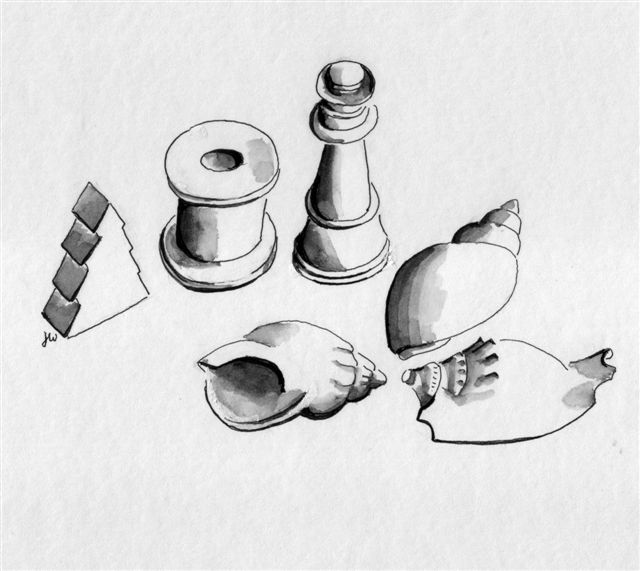By Caroline Schuck and Jane Wood.
Creative supervision encourages self reflection and self learning, through the use of attractive resources and experiential techniques. Our book, Inspiring Creative Supervision introduces numerous facilitation techniques such as narrative, drawings, charts, visualization and group work, and recommends the use of media such as toys, puppets, objets trouvé and picture postcards.
In creative supervision the supervisee, trainee or student is encouraged to actively re-create the original issue or situation using props and resources. For example, you might encourage a supervisee to re-create a scenario from the consulting room or classroom using objets trouvé. An interesting selection of items can be assembled at a moment’s notice or you can gather together a more permanent collection. You can add interest by including a variety of textures, weights, shapes, sizes and materials. Suitable objects might be seashells, coloured plastic bottle tops, pine cones, cotton reels, marbles, key rings, colourful erasers, pencil sharpeners, Christmas decorations and souvenirs.

When presented with this collection, you will notice that the atmosphere in the room changes. The supervisees or students relax and become excited, as if they have shifted from work mode into play. They become engrossed in choosing objects that represent the characteristics of their clients or colleagues. The choice of the objects and the placement of them reveal the dynamic of the relationship, as well as the atmosphere felt in the original situation.
As in all supervision there will be a parallel process and here it is revealed through the use of external objects rather than words.
The act of creation can be experienced in different ways – it might be meditative or energetic. It enables the supervisee to review their issues from a different perspective. The advantage of using stimulating external resources means that the supervisee can step back and become the observer of their own creation. Effectively they become their own supervisor to your meta supervisor.
When the supervisee sits back and relaxes, or looks around the room, you know that they have completed the scenario and are ready to receive feedback and then go into the discussion stage of the process. This might result in an action plan in which changes are made to the placement of the object trouvé, which will in turn change the real life relationship. Our book gives case study examples of this.
The focus of creative supervision is to enable the supervisee to self-reflect and open up their blind-sports. The supervisor no longer needs to be the guide, prescribing or informing the supervisee’s thoughts. Instead the supervisor becomes a gentle facilitator or catalyst providing the minimum intervention that enables the maximum change.
Copyright © Jessica Kingsley Publishers 2011.